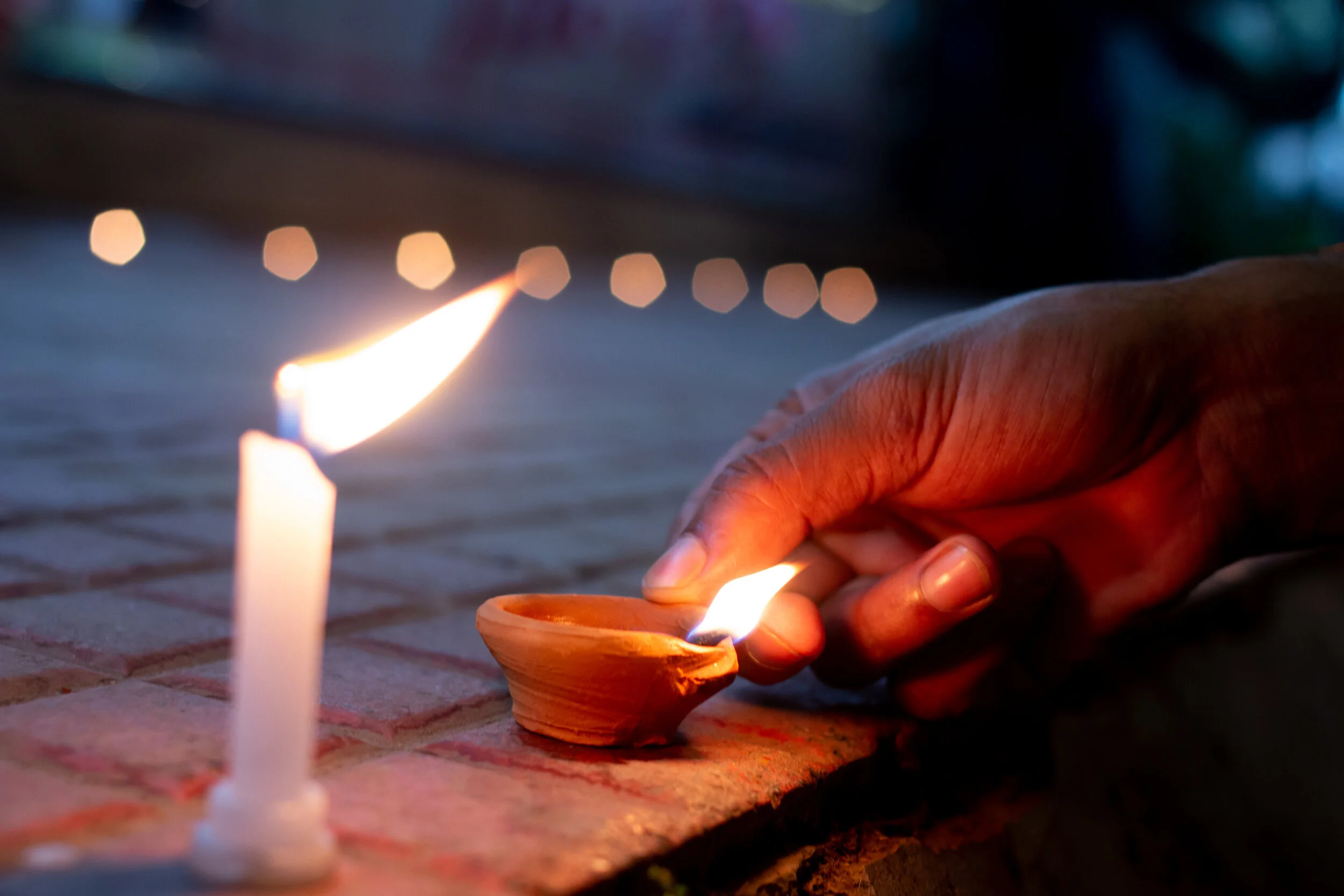Celebrating Diwali: This weekend millions celebrate the Hindu festival of lights
A diya is laid on the pavement outside a house in New Delhi for Diwali 2019. Photo by Avinash Giri.
Diwali is one of the most important holidays in India. The celebration, which start on Nov. 12 this year, is also called Dipawali or Festival of Lights.
Diwali is a Hindu tradition and national holiday in India but also celebrated by millions worldwide: Jains, Sikhs and Buddhists who trace their origins to India as well as some South Asian Christians and Muslims.
Since Diwali celebrates the triumph of good over evil, it’s often compared to Christmas in the West, which celebrates the birth of Jesus Christ, who is believed to be the savior of the world to conquer it from evil. Diwali’s origins are found in several different Hindu myths or legends from ancient holy texts.
In Photos: Celebrating Diwali 2020 During The Pandemic
In northern India, the story most noted is how Lord Ram, one of Hinduism’s most worshipped gods, used a row of lit clay lamps to defeat Ravana, a symbol of evil from Sri Lankan mythology. Southern Indians tend to celebrate how another Hindu god, Lord Krishna, defeated the demon Narakasura. In western India, the day Lord Vishnu sent King Bali, a demon, to the netherworld is celebrated.
In Photos: India Celebrates Diwali, The Festival Of Light
No matter what story one is celebrating, this holiday can be traced back more than 2,500 years and takes place every year over the course of five days. Many families don’t celebrate every tradition, but these are the common ways to celebrate:
Day One: The first day is called Dhanteras and is celebrated by purchasing gold and silver, specifically kitchenware, as a symbol of good luck. People are also called to deep-clean their home and business. Dhanteras is a celebration of the goddess of wealth, Lakshmi.
Day Two: The second day of festivities is called Chhoti Diwali (little Diwali). On this day, people generally continue decorating their homes with fairy lights outside and clay lamps on steps and pavement called diyas (lights in Hindi, with Arabic origin). Driveways and entrances to homes are also decorated with colorful sands, powders, flower petals, rice and other substances in artful forms like lotus flowers called rangoli. This day is considered the day that King Krishna defeated the demon Narakasura.
Day Three: The main festival of Diwali happens on the third day. Families gather for Lakshmi puja —prayer and worship to Goddess Lakshimi. But, two other deities are commonly worshiped during this time: Kuber, lord of wealth, and Ganesh, the elephant-headed god of wisdom. After prayer and worship, families share plates of food, sweets and gifts with their neighbors, co-workers and relatives. It is also common for families to shoot fireworks and light sparklers. This tradition has become a point of contention as the Indian government has banned the sale of fireworks because they contribute to North India’s dangerously toxic air quality at this time of year.
Day Four: The fourth day of festivities is considered the mark of the new year in western India and is called Bestu Varas or Padva. Families gather to give well wishes for the new year. In North India, people often celebrate Govardhan Puja and worship Lord Krishna.
Day Five: Bahi Dooj is the fifth and final day of celebration, and consists of brothers visiting their sisters to perform a Tilak ceremony. Tilak is a mark made on the forehead out of turmeric, clay, ash from a puja fire, sandalwood, charcoal or other substances to show religious devotion. Sisters pray for their brothers' long lives, while brothers vow to protect their sisters.
Outside of the religious ceremonies, people who celebrate Diwali often hold house parties with food, drinks and sometimes even card games with gambling for cash. This year, the coronavirus pandemic will likely dampen those plans.
Njeri McPherson is a junior at The King’s College in New York City majoring in Journalism, Culture and Society. She previously interned at the New York Amsterdam News and her work has also been published in the Empire State Tribune, the student newspaper at King’s.

